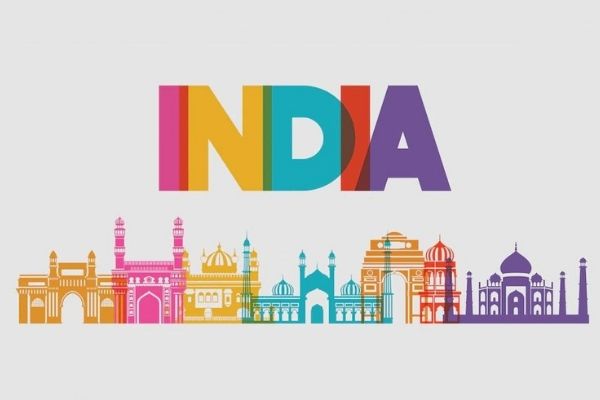
Heritage is about the things from the past which are valued enough today to save tomorrow!
World heritage day is observed on 18th April every year to increase awareness on the importance of diversity of cultural heritage and preserving it for the generations ahead. The theme of World Heritage 2022 is ‘Heritage and Climate‘. Heritage Sites are a symbol of history. They are the representation of the past times. Every historical site has an important story to tell, and these stories have inspired many people to strengthen their convictions and commitment to fight injustice and oppression.
Here is the list of 20 UNESCO World Heritage Sites in India:
-
Taj Mahal (Agra)
One of the seven wonders of the world, White Marbel Mughal Architecture, the Taj Mahal was built by emperor Shah Jahan in the memory of his wife, Mumtaz Mahal. It is located in the banks of river Yamuna in Agra.
-
Khajurao, Madhya Pradesh
Located in Madhya Pradesh, Khajurao is the famous UNESCO world heritage site in India. Temple is situated 175km south-east of Jhansi. They are well known for their Nagara style symbolism and erotic figures and sculptures.
-
Hampi, Karnataka
Hampi is UNESCO World Heritage site located in the Northern part of Karnataka. It lies within the ruins of the ancient, prosperous kingdom of Vijaynagar. The ruins at Hampi are a collection of heritage sites depicting the excellent Dravidian style of art and architecture.
-
Ajanta caves, Maharashtra
One of the world heritage sites in India, the Ajanta Caves date back to around 2nd century BCE to 650CE and consist of the most beautiful masterpiece of 31 rock-cut Buddhist cave monuments, paintings and sculpture.
-
Ellora caves, Mahrashtra
The Ellora caves are a famous World Heritage site in India and an archaeological site, ranging 29 km northwest to the city of Aurangabad. The Ellora caves are well known for their Indian-rock cut architecture.
-
Red Fort, Delhi
Situated in the centre of the historic city of New Delhi, the red fort was built by Emperor Shah Jahan when he shifted his capital from Agra to Delhi, or what was known as Shahjahanbad at that time. The fort became the political hub of the Mughals. Red fort is made up of red sandstone and houses several other smaller buildings such as the private pavilions.
-
Sun Temple, Konark, Odisha
The Sun temple at Konark is a 13th– century temple situated in Konark, Odisha. The Sun Temple is in the shape of gigantic chariot with carved stone wheel, pillars and walls and is led by six enormously carved horses.
-
Sanchi, Madhya Pradesh
The Buddhist Monument located at Sanchi in Madhya Pradesh is a manifestation of Heritage sites of India, and it is also the oldest stone structures in India.
-
Humayun’s Tomb, Delhi
This World Heritage Site in India was built by Begum Bega, The first wife of Humayun between 1565-1572. It is the only monument which has gone for several restorations works.
-
Jantar Mantar
The Jantar Mantar is an astronomical observatory built in the 18th century Rajasthan. It is an astronomical observatory which was created by the Rajput Kings Sawai Jai Singh of Rajasthan in 1738 CE. It is a collection of 19 astronomical instruments including the world’s largest stone Sundial.
Read more: World Heritage Week: How many World Heritage Sites are there in India
-
Fatehpur Sikhri, Uttar Pradesh
The name of the city itself denotes the victory of Akbar over Chittor and Ranthambore. Fatehpur Sikhri constitutes of four main monuments. The Jama Mazjid, The Buland Darwaza, Panch Mahal or Jada Baai ka Mahal.
-
Elephanta Caves, Maharashtra
The elephanta caves is located on an island in the Arabian city, not very far from the city of Mumbai. The chain of sculpted caves located on Elephanta Island is also known as Gharapuri.
-
Qutub Minar, New Delhi
One of the most famous World Heritage sites in India, the Qutub Minar was built in 1193 by the first muslim ruler of Delhi, Qutub-ud-din-Aibak of Mamluk dynasty.
-
Agra Fort, Uttar Pradesh
Established in Mughal era, during the time of Akbar, the Agra fort is a fusion of Persian art of the Timurid and the Indian forms of architecture.
-
Hills Forts of Rajasthan
This place is famous for its unique Rajput Military Defence Architecture. It includes six majestic forts in Chittorgarh, Kumbhalgarh, Ranthambore Fort, Gagron Fort, Amber Fort and Jaislamer Fort.
-
Churches and Convents of Goa
The 15th and 16th century mark the coming of the portugese to India, and they established themselves at Goa, along the Konak cost in South western part of India.
-
Group of Monuments at Mahabalipuram, Tamil Nadu
The temples situated in the town of Mahabalipuram which is approximately 58 km from Chennai in the commandel coast of Bay of Bengal. These temples were built under the reign of Pallava rulers.
-
Chola temples, Tamil Nadu
These temples were built in Southern Part of India during the rule of Chola empire. The Brihadisvara temple was built under the reign of Rajaraja1 and is a milestone when it comes to Chola architecture.
-
Rani ki Vav, Gujrat
Built in the 3rd millennium BC. It is an explicit example of beautiful Ancient Indian architecture. It was constructed during the time of Solanki dynasty.
-
Rock Shelters of Bimbedtka, Madhya Pradesh
It is the place where the earliest traces of human life on the Indian subcontinent was discovered. They are located at the foothills of the Vindhya Mountain in the Deccan Plateau and are in archaeological sites for the Mesolithic period.








